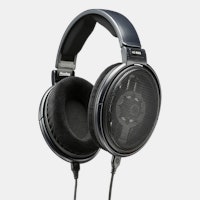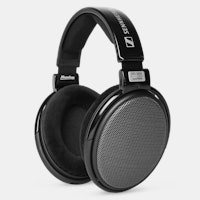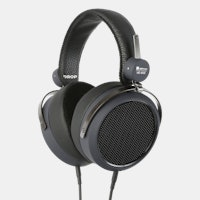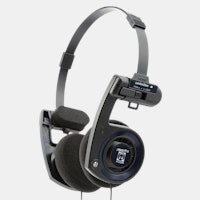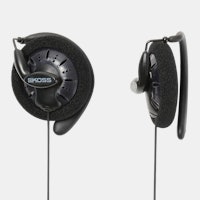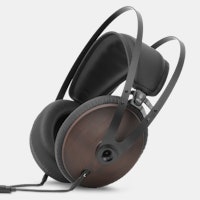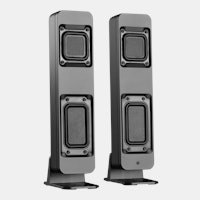Click to view our Accessibility Statement or contact us with accessibility-related questions















Showing 1 of 138 conversations about:
If you have a MAC, you don't need a DAC
By
JGalt
Matthewahillman
2
Mar 12, 2019
Macbook pros can only output 192 kHz, a Fiio K3 dac/amp for example can output 384kHz. Don't know about you but I can hear the difference between 192kHz music and 320kHz music.

bootster1
61
Mar 14, 2019
MatthewahillmanMost people can tell the difference. The difference is subtle, but present. You are less apt to experience listening fatigue if you have a higher bit rate and less noise. The higher bit rate files are able to have higher frequencies appear clearer and allow a presence that lower bit rate files simply cannot deliver. Of course this is a personal opinion, as the science behind this is more often than not, always going to be ignored in favor of opinionated discussion.
The Harman Kardon company is noted for it's "Ultra High Bandwidth" technology that allows the frequencies of the audio to extend well beyond the typical accepted 20 to 20 kHz standard. The argument is that the resonant frequencies and artifacts of multiples of the typically accepted bandwidth can influence the perceived frequencies in a beneficial way. They have been making their audio components conform to that theory and practice for generations now.

heathdwatts
7
Apr 1, 2019
MatthewahillmanIf you can hear the difference between them, you are very young and someone from Marvel or DC needs to write a book about you. Ha!
https://www.androidauthority.com/why-you-dont-want-that-32-bit-dac-667621/

heathdwatts
7
Apr 1, 2019
bootster1If you can hear the difference between 192 kHz and 384 kHz, which you likely cannot (see https://www.androidauthority.com/why-you-dont-want-that-32-bit-dac-667621/ ), then you should consider a 768 kHz, 64 bit DAC, because this audiophile site is using pseudoscience to tell us that the 384 kHz DAC is limiting our listening experience (see https://chordelectronics.co.uk/product/dac-64/ ). Of course, you could wait a few years for the 128 bit, 1536 kHz DAC to be released. I'm sure that only people with "truly" discerning ears can hear the difference.
I'm not trying to be a jerk, but it likely seems that I am. Sorry, but I'm trying to save you some money. Spend your money as you wish, but the human ear can only hear so much. Advertisements in comic books once sold X-ray glasses that supposedly allowed one's eyes to see through clothes, buildings, etc. Strangely, they didn't work, because the glasses did not emit X-rays (thankfully) and the human eye can't see in the X-ray range. Similarly, the human ear can only hear and discern S/N difference to a certain range. Of course, the audiophile companies will wave their hands and loot your wallet while telling you that you have "special" ears and that require their "special" products, but they are selling you audiophile snake oil.

bootster1
61
Apr 1, 2019
heathdwattsI don't see anyone actually charging more money for these DAC chips that are capable of delivering multiples of 32 bit, 48 kHz output, Per Se. The technology is such that there is no restriction that would prevent the technology from delivering these chipsets based on their inherent ability to deliver these multiples at little to no extra cost. In other words, the ability to have a 128 bit, 1536 kHz DAC would not cost that much more to produce, if any at all, than the lower frequency chips. The question at hand is whether the altered output waveform would be discernibly different than the basic output, that doesn't contain these multiple frequencies in the output waveform.
The comparison to a gimmick, such as X Ray glasses, is inconsequential to the discussion, as the presence of multiple frequencies is REAL, and actually exists in the waveform (if purposefully implemented).
My theory is based on the resonant and dissonant multiple outputs of a sine wave affording the human ear the ability to discern the difference in a slightly audible way. Just like the way a subwoofer has the ability to change the output waveform 180 degrees by the flick of a switch, one of the reasons would be the prevention of "Doubling" and "Tripling" of the waveform, the output will have some audible undertones created by the presence of these multiples. These multiples could actually be detrimental to the output if implemented incorrectly, like being out of phase, or having peaks that occur at the same time as the base frequency, causing the doubling of the audio waveform output.
There is a simple explanation for the 180 degree frequency phase switch on the back of most subwoofers, and a valid discussion can be made that questions the validity of an output waveform that contains multiples of the base frequency being present in the output audio waveform. I am interested to see if these multiples can be beneficial to the output waveform, and would like to see someone expound on this theory with an unbiased intent.
(Edited)

andrew99
11
Jun 15, 2019
MatthewahillmanYou literally cannot hear the difference between 192khz and 384khz, period. It's not humanly possible. 100% placebo.
umur
3
Mar 20, 2020
MatthewahillmanAs a person who has experience in DSP and signal processing, hearing above around 16-17kHz at 25+ years of age is quite an achievement, let alone above 20kHz, which is accepted as the human hearing threshold. So for listening purposes, 48kHz is more than enough, enough for the low-pass digital filters in the DAC in our modern age.
However, for convenience in production, like sample stretching etc., it's a good idea to record at much higher sample rates to not worry about sampling rate while messing around with music/audio. That's why you see 96kHz sampling rates in recording equipment (ADCs), not because you can hear the difference between the outputs of 96kHz DACs. Now, if one doesn't want to spend R&D costs to build filters to fit the relatively specification, that's when it comes into play, as the filters have frequency response in themselves. So it's much more cost effective to use the headroom of 96kHz to design easily implementable filters, i.e. for better frequency response at a lower cost.
caphathaway
9
Dec 25, 2020
MatthewahillmanCorrection...you're justifying the purchase of an unnecessary item by convincing yourself you can hear that difference.
PRODUCTS YOU MAY LIKE
Trending Posts in Audiophile

harrykane01
World Of Shanik
The World of Shanik, known for its fusion of culinary excellence and elegant design, now offers a diverse range of products to enhance your lifestyle. From the exquisite turntable cheese board, perfect for entertaining guests with style, to the nightstand organizer wood, keeping your essentials neatly arranged, to the custom tequila shot glasses that add a personal touch to any gathering, Shanik continues to innovate in both form and function. Since its inception as a celebration of good food, good people, and sophisticated design, Shanik has evolved into a trusted destination for those who appreciate quality craftsmanship and tasteful living.
Apr 25, 2024

robbertwilson
Shop Premium Women Golf Shirts at ApparelnBags
Be the trendsetter on the golf course with our stylish collection of custom polo shirts for women. Whether you're swinging your way to victory or simply want to rock that sporty chic look, our polo shirts for women are here to make you stand out. Moreover, we understand that style and quality go hand in hand. That's why, from golf shirts for women to long sleeve polo shirts for women , we handpick the best products to ensure you experience comfort and durability. Also, our women polo shirts offer the perfect blend of style and functionality, so you can focus on your game without compromising style. So, grab your favorite polos today. Remember, it's not just a game; it's a lifestyle, and our polos will help you ace both!
Apr 25, 2024

SsButerbal
Ringing in PC38X's
I recently got this headset, and wow is it good. My only issue is when certain people talk on discord, I can hear a really high pitched ringing. I fiddled with a bunch of settings, computer audio and discord, and nothing seems to solve the issue. It is primarily if not all in my right ear only. Is there something wrong with my headset, or was that ringing always there I can just hear it cause the headset is THAT good? I haven't had any issues with any other application, though I have yet to test if I can hear the ringing on a different version of discord, say on my xbox instead of my pc. Only other issue I've had is occasional static, but I can't tell if it's from the headset or the show/game/etc.
Apr 24, 2024
itsamepe
Sennheiser PC37X randomly goes bad after disconnecting the cable ?
Greetings, Yesterday I was using my headset like normal with my macbook, just listening to music and on a call with people like usual, and the headset was perfectly fine. The stock wire that came with the headset is extremely long and yesterday it annoyed me very much that it kept getting tangled with itself, so I decided to see if the cable is replaceable. I pulled out the cable from the headset and saw the adapter, and looked online for a replacement. Upon plugging it back in, the audio sounded extremely muffled and washed out. Im not sure what I did wrong to make it mess up like that as I've always taken good care of it, ive had it for about 2 years and its always just been chilling on my desk, but anywho I thought the cable just went bad and ordered a replacement. The replacement came, and the issue is still persistant, so I am not sure what the issue is I've tried multiple different headsets and the issue is not with the port, and I also tried it with my windows laptop and...
Apr 23, 2024

MrChiSox
Big changes coming to my tiny little music room, I've recently purchased a new stack. Currently figuring out where to locate it all and ordering up the necessary cables, it won't be too long before I'm up and running. I am now the proud owner of a brand new stack. It's a European brand called Earmen. Amp, DAC, Streamer & Linear Power Supply. It won't be long!
https://www.youtube.com/watch?v=MB15yM4UptQ
Apr 23, 2024

Briankan
Recommendation for my next headphone set? I have Koss 95x
Hey all, What would you recommend I get next and why? I have Koss ESP-95x electrostatic massdrop headphones. These are my first and only audiophile set. I love them. I think my only real requirements is $500 or less for the headphones and that they have a little more low end. I don’t need thump but these are really light on lows…but the experience is still awesome. Also any recommendations on an amp? I only have my electrostatic thingy. I am using the Topping D50 DAC. thx!!
Apr 22, 2024

Simthaniel
Rigs
Modded headphones with qudelix at the core
When I received the Qudelix 5K, I had already modified a pair of Superlux HD-681 headphones. I previously soldered my own balanced connections to the drivers, providing multiple ways to connect and...
Apr 14, 2024
